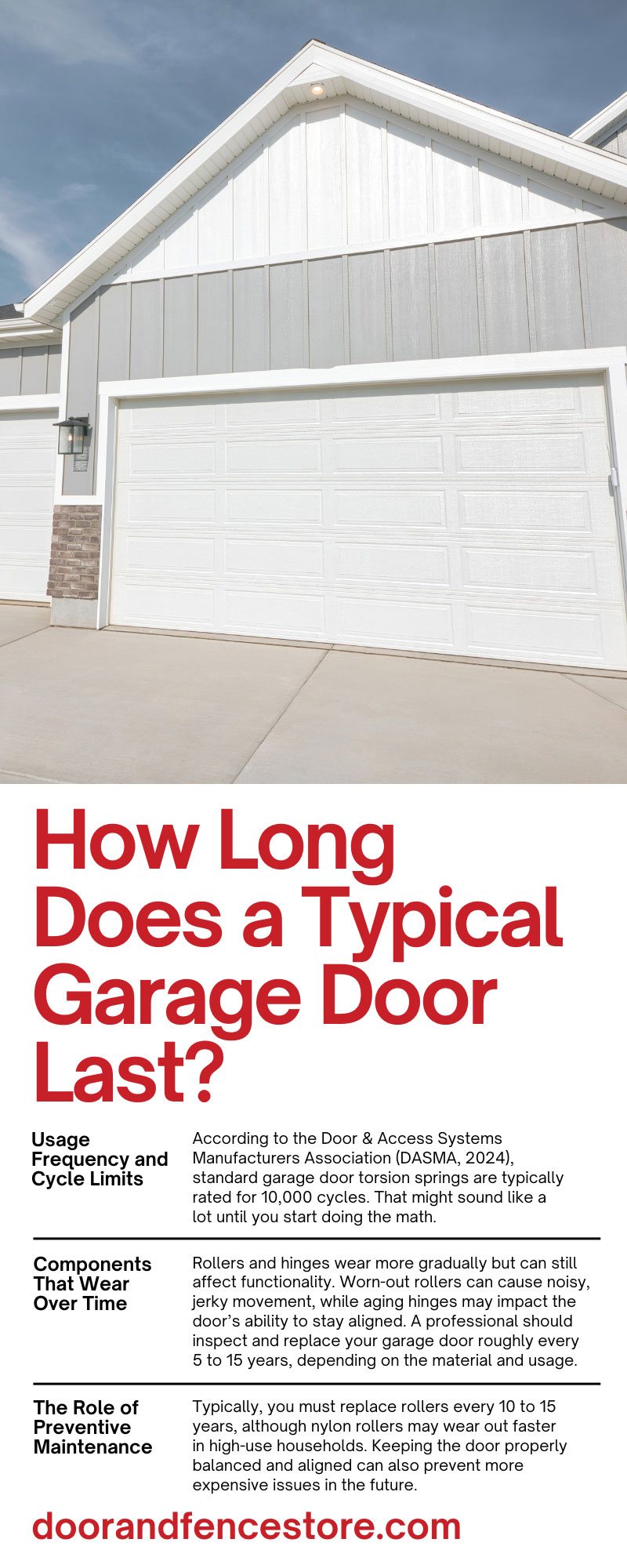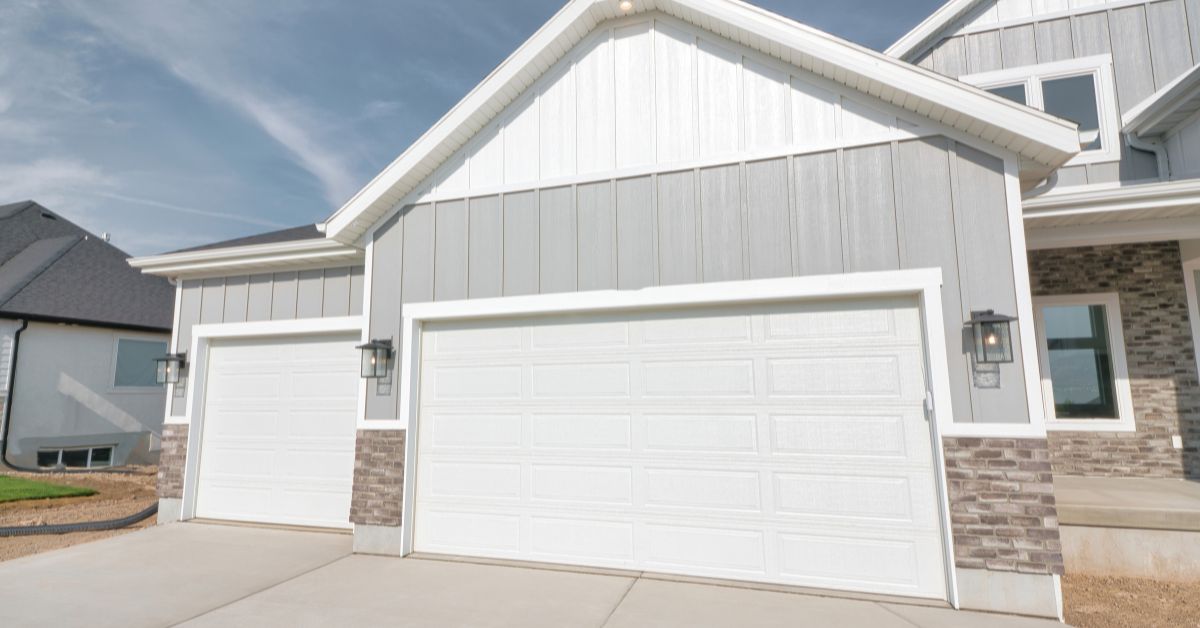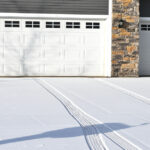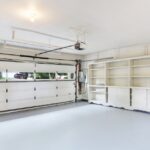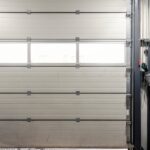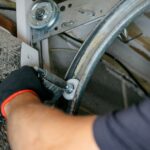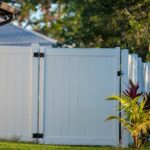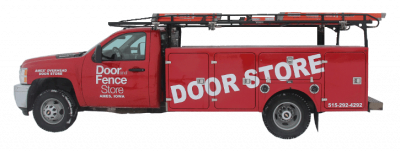How long does a typical garage door last? It’s a fair question. Most homeowners want to know when their garage door might need replacing, but the reality is there’s no one-size-fits-all timeline. Lifespan depends on a handful of variables, and these aren’t always obvious at first glance.
Below, we’ll break down the deciding factors that influence your garage door’s life expectancy and how you can maximize the lifespan of the one you have now.
Material Types and Lifespan
Not all garage doors age at the same rate, and much of that comes down to what they’re made of. The material you choose plays a direct role in how well a door holds up over time, especially in climates like Iowa’s, where freeze-thaw cycles, humidity, and snowfall are part of the yearly routine.
Steel doors are a common choice for residential properties in Ames due to their durability and low maintenance requirements. Generally, a steel garage door will last 15 to 30 years, assuming it’s well-maintained and properly installed.
Wood doors, while attractive, are more susceptible to moisture and temperature fluctuations. Without consistent upkeep (including resealing and repainting every few years), wood doors can begin to warp or rot, which limits their lifespan to 15 to 20 years in many Midwest homes.
Aluminum doors typically last 15 to 25 years and are resistant to rust, making them an ideal choice in areas with high humidity or salt exposure. However, they’re more prone to dents than steel.
Fiberglass is less common, but it is still available. It’s lightweight and resistant to corrosion, but it can become brittle in cold weather, which can lead to cracking. This brittleness can reduce the expected lifespan to 15 to 20 years in colder climates.
Usage Frequency and Cycle Limits
Unfortunately, the sturdiest garage doors won’t last if they are subject to heavy daily use. Most doors (and their core components) are rated by “cycles,” with one full cycle being a single open and close.
According to the Door & Access Systems Manufacturers Association (DASMA, 2024), standard garage door torsion springs are typically rated for 10,000 cycles. That might sound like a lot until you start doing the math.
Say you open your garage door four times per day. That’s 1,460 cycles per year, which means your springs alone might wear out in under seven years. Increase that to six cycles per day (common for larger households or work-from-home families), and you’re cutting that lifespan down to less than five years.
Components That Wear Over Time
While most people think of the garage door as a single unit, its actual performance—and longevity—comes down to how well its individual components hold up. Not all parts wear at the same pace.
As noted earlier, springs are typically rated for around 10,000 cycles, and once they fail, the door often becomes difficult to operate. If you’ve replaced torsion springs more than once over the life of your door, that may be a signal that the rest of the system is nearing its end.
Rollers and hinges wear more gradually but can still affect functionality. Worn-out rollers can cause noisy, jerky movement, while aging hinges may impact the door’s ability to stay aligned. A professional should inspect and replace your garage door roughly every 5 to 15 years, depending on the material and usage.
Tracks don’t wear out as quickly, but if they become bent or misaligned, they can accelerate strain on the rest of the system. And then there’s the garage door opener, which usually lasts 10 to 15 years on its own. However, replacing the door and opener at the same time is worth considering if your opener is older than the door itself.
The quality of the door’s installation can directly impact how long its parts last over time. Improper alignment, unbalanced tension, or inadequate hardware can all shorten the lifespan of both individual parts and the door. It’s one of those cases where cutting corners upfront can lead to earlier-than-expected repairs or replacements down the road.
The Role of Preventive Maintenance
Routine maintenance is, perhaps, the clearest way to extend a garage door’s lifespan. Skipping simple upkeep tasks causes parts to seize, strain, or fail years earlier than they should.
A good rule of thumb is to perform maintenance twice a year: Once in the spring and again in the fall. These seasonal touchpoints are ideal because they bracket Iowa’s most extreme weather periods. During each checkup, lubricate all moving parts, including rollers, hinges, and tracks, with a silicone-based lubricant. Silicone-based lubricants reduce friction and prevent unnecessary wear and tear.
You should also inspect springs annually for signs of rust, stretching, or imbalance. Typically, you must replace rollers every 10 to 15 years, although nylon rollers may wear out faster in high-use households. Keeping the door properly balanced and aligned can also prevent more expensive issues in the future.
Weather and Environmental Effects
Climate is another factor in determining garage door longevity, especially in a place like Ames. From icy winters to humid summers, weather swings in Central Iowa can be tough on materials and hardware.
Snow and ice buildup at the base of the door can strain the opener or interfere with sensor performance. Frozen moisture in and around moving parts can cause components to seize or degrade. Likewise, high humidity can cause wood doors to swell, paint to peel, and metal hardware to rust.
Even wind can play a role. Repeated exposure to strong gusts may slowly warp panels over time, particularly if the door isn’t properly reinforced.
Adding insulation and weather-sealing isn’t just about energy savings. These upgrades can regulate internal garage temperatures and reduce the effects of expansion and contraction. Your heated garage door’s lifespan may shift slightly since the components are exposed to more consistent temperatures year-round.
Simply put, the more control you have over the environment inside and around your garage, the better your door will age.
Know When To Start Fresh
So, how long does a typical garage door last? Most garage doors have an expected lifespan of 15 to 30 years, provided they receive regular maintenance and experience moderate daily use. Doors exposed to heavier wear or more extreme climates may not reach that full window, while others, with the right care and conditions, can surpass it.
One final consideration: Waiting too long to replace a failing door isn’t the most cost-effective route. In some cases, an aging system may become a recurring headache, costing more in time, stress, and repair bills than a new installation ever would.
If you’re ready to replace your garage door, reach out to us at The Door and Fence Store. We’ve helped Ames and Central Iowa homeowners with our residential garage door service for over 49 years, and we’d also be glad to help you.
